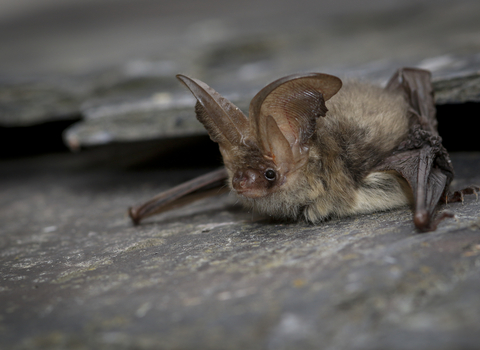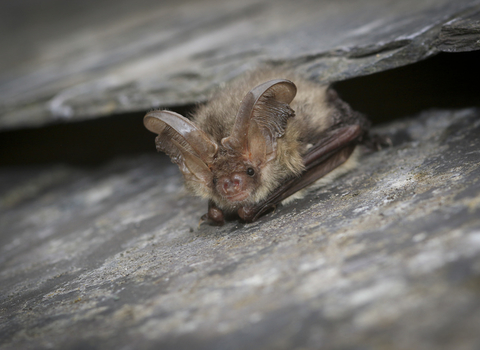
©Tom Marshall
Brown long-eared bat
The brown long-eared bat certainly lives up to its name: its ears are nearly as long as its body! Look out for it feeding along hedgerows, and in gardens and woodland.
Scientific name
Plecotus auritusWhen to see
April to OctoberSpecies information
Category
Statistics
Length: 3.7-5.2cmWingspan: 20-30cm
Weight: 6-12g
Average lifespan: 4-5 years
Protected in the UK under the Wildlife and Countryside Act, 1981. Priority Species under the UK Post-2010 Biodiversity Framework. European Protected Species under Annex IV of the European Habitats Directive.
About
The brown long-eared bat is a medium sized bat with huge ears. As with all UK bats, they are nocturnal, only coming out at night to feed on midges, moths and other flying insects. They have an incredible sense of direction thanks to echolocation, which they use to hunt prey. Brown long-eared bats roost in holes in trees and old buildings, and feed in parks, gardens and woodland. In the summer, females form maternity colonies and have just a single pup each. They hibernate over winter between November and April.How to identify
The brown long-eared bat has greyish-brown fur and characteristically big ears, nearly as long as its body. It has a relatively slow, fluttery flight.Distribution
Widespread, but absent from some Scottish Islands.Did you know?
The brown long-eared bat is known as the 'whispering bat', because its voice is very quiet - no need to shout when you have such big ears! While at rest, it tends to either curl its ears back or tuck them under its wings.
Tom Marshall
Which bat species are found in Lancashire?
Discover more about the variety of bat species can be found across the North West.

Tom Marshall
Which bat species are found in Lancashire?
Discover more about the variety of bat species can be found across the North West.
